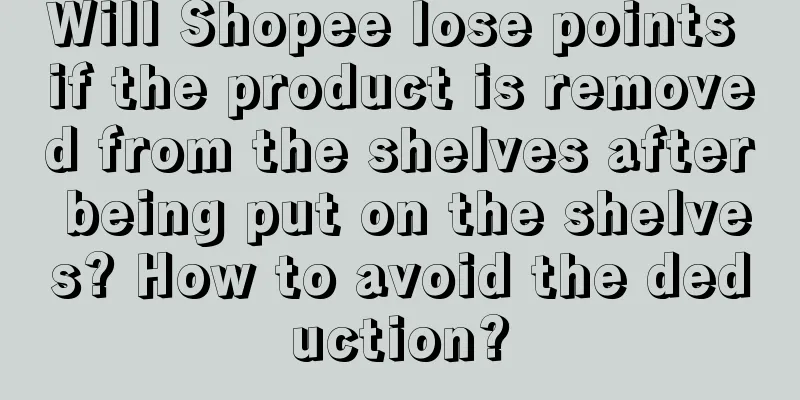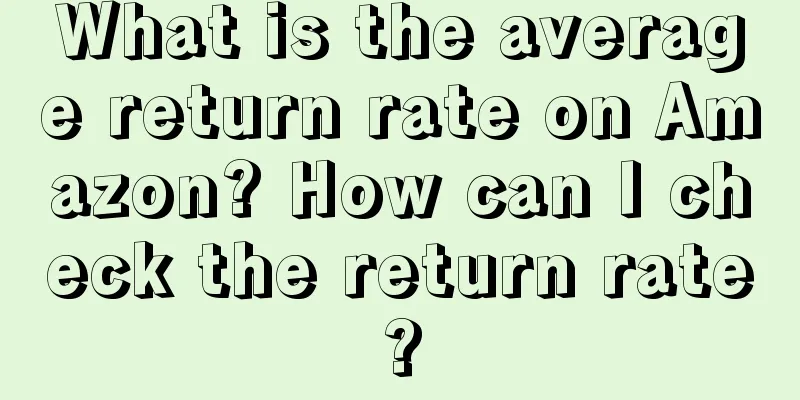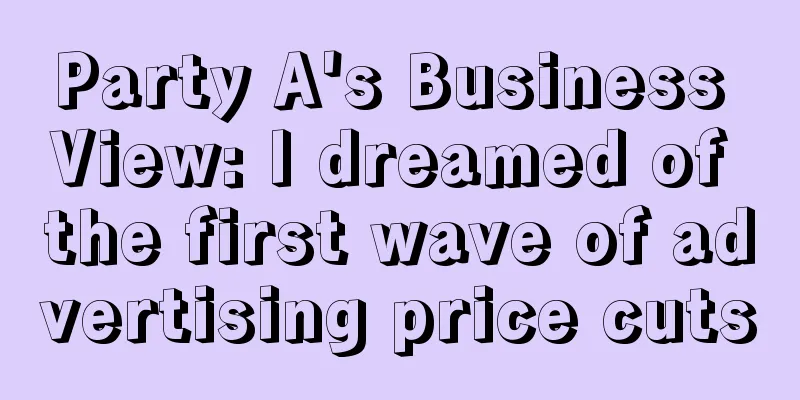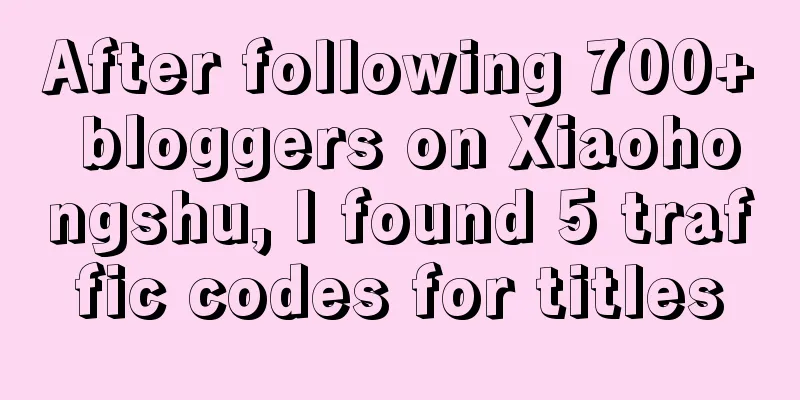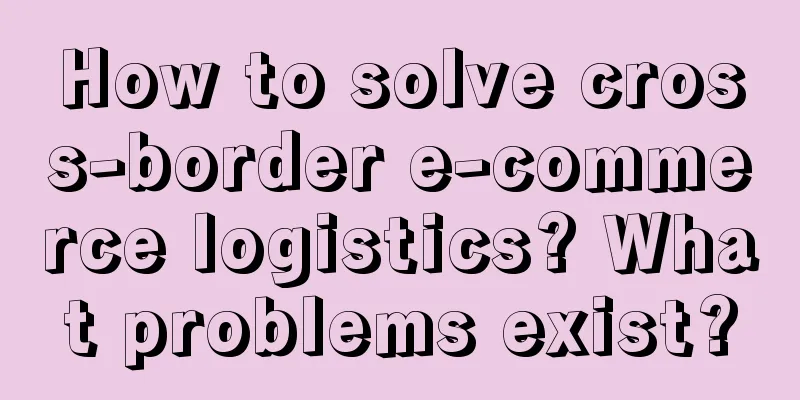Mid-year review | Xiaohongshu's latest developments and trends

At the beginning of the year, I published an article predicting the changes in the grass-planting ecology this year. Now that 2023 is already halfway through, let’s take a look at what trends are worth grasping next. 1. From seeding to return searchIn the trend insights at the beginning of the year, I mentioned that Xiaohongshu’s user conversion path this year will change from the past grass-planting conversion to return search conversion. Half a year later, this trend has been confirmed in a series of official actions. If Xiaohongshu joked at the beginning of the year that many users "used Xiaohongshu as Baidu", then the full launch of the image search function some time ago was equivalent to Xiaohongshu officially announcing its positioning as the "shopping version of Baidu". Whether from the perspective of the supply market or the consumer market, the subsequent grass-planting strategy must be carried out on two parallel lines - one is mainly for exposure, and the other is mainly for conversion. The main exposed content, which is what I often call high-spread content, plays the role of reaching users, including historical purchasing users, potential users, and new users. The main conversion content, that is, the strong grass-planting content, plays the role of accurate conversion in user return searches. Therefore, before launching the campaign, we can classify the existing popular content in our own track, clarify which content is the main exposure and which content is the main conversion, so as to provide a reference for the proportion of content to be launched. For example, I conducted a similar analysis when I was doing advertising for a pet food brand some time ago. Let’s go back to the old question - from the perspective of conversion, is it enough to just lay out the main conversion content? Of course not. At any stage of brand development, no track is right. You should know that conversion content mainly relies on return search, that is, the user's active search to achieve the in-depth planting and conversion we want. Without dissemination content, user return search is out of the question. Even industry giants like Estee Lauder and Lancome need a large amount of communication content to ensure that their brands remain active in front of users, let alone us who are growing up? It’s just that the proportion of content layout for exposure and conversion will be different for different development stages. Therefore, when launching brand promotions, whether the brand is doing it itself or seeking cooperation with an agency, it is recommended that everyone look at the promotion content over a relatively long period of time. What effect does it have and how much support does it provide to the brand, rather than simply how much budget you have and how many notes you take. The following are also the key considerations when I make plans for brands:
Based on these, the delivery strategy is derived. 2. Traffic is dispersed and the influence of seeding is decliningA phrase I've heard a lot this year is that planting seeds is becoming less and less effective and more and more difficult to do. I believe you are not the only one who has this experience:
Why does this happen? Many friends only know that compared with traditional advertising, grass-roots advertising has a higher conversion efficiency and it is easy to get big results with small investment. This is also why many businesses with limited marketing budgets have gradually concentrated their marketing expenses on promoting products on Xiaohongshu in recent years. But what we need to know is that the reason why grass-planting has such an effect is that it essentially reduces the cost of users. The cost mentioned here is not just the amount you need to pay when placing an order. For example, if I wanted to buy an electric stew pot, I would first need to go to the cat store to look at the detail pages of at least ten products, ask the customer service, read the comment section, and filter out 3-5 models that seem to be good. Then go to Baidu or ask friends and family how to choose a good electric stew pot and what aspects should be considered to avoid disappointment. In this process, I may reshape my needs and give up the 3-5 models that I had selected with great difficulty, and start picking again in the cat store. At the same time, I also need to consider the impact of store promotions, platform promotions, etc. on prices. It can be said that buying something in the past was as difficult as taking a test, and the whole process was filled with various hidden costs. But when the grass-planting economy emerged, everything became simple. When we buy an electric stew pot, we can directly see the usage feedback from various buyers and bloggers' reviews when we have a pre-order option. When we don't know how to choose, there are also professional bloggers who can teach us how to choose according to our own needs, give you the right options, and even have corresponding price references, telling you when to buy, where to buy, and how to buy it at the best price! Moreover, compared with friends and relatives, the base size of bloggers and Xiaohongshu users is obviously different. At the same time, the professionalism of bloggers in this area also has a stronger trust basis. This is why the grass-roots economy has a different effect on user conversion than traditional advertising. The essence is to reduce the various explicit and implicit costs of users during the purchasing process. So why has the effect been weak recently? It is also because of this. In the past few years, because there were relatively few brands on Xiaohongshu and its commercialization was not very perfect, it did reduce users' costs. But now, on the one hand, based on the saturation of the supply market and the increasing number of merchants entering the market, a mixed bag of good and bad businesses has invisibly increased users' horizontal selection costs . The grass-planting ecosystem has reached its peak bonus period, but it does not mean that grass-planting itself has become ineffective for users. It’s just that for us merchants, it’s not so fast to get results, and their ability to identify and judge grass-planting information is also constantly improving. Looking back at the past when we were doing brand advertising, even for white-label products, we could get pretty good Taobao search conversion results within a month. But in the past year, we have to wait almost three months, or even more than half a year, to get clearer market feedback. Because the consumer market is also constantly watching for feedback, rather than blindly following the advice of a single blogger. But under such marketing trends, the market will eventually screen out those businesses that are truly dedicated to building their brand, reputation and products. So, keep calm, work hard on building word of mouth, products and content, and the market will reward you. 3. Changes in Advantages of Brand ConversionIn addition to changes in the ecological environment, our advantages in achieving conversions in user communication are also changing accordingly. I have mentioned this in the previous case analysis - what users want is not the optimal solution in terms of professional attribute cognition, but the value trade-offs in the search process. Especially for some consumption that tends to be emotional and where the technical barriers between brands are not strong, we should not try to screen out "smart users" during our advertising, but rather meet the right consumers. Because there is no limit or ceiling to being shrewd, what follows is continuous breakthroughs in technical parameters and prices. Once a rational comparison is made, the only way left between brands is to compete with each other. Only when we resonate with our users in terms of lifestyle, concepts and emotions can we truly establish our own brand barrier. Therefore, if we want to cultivate long-term super users of the brand during advertising, we need to strengthen the identity of the circle in the content and highlight our highlights rather than selling points. Simply put, give him a highlight that he can remember, but not necessarily the advantage of our product . However, our previous methods of presenting data and explaining selling points, or conducting horizontal evaluations of multiple competing products to highlight ourselves, have become ineffective in consumer communication. This is also the trend that Xiaohongshu has been advocating in terms of grass-growing content in the past year - reducing the strong output of selling points and turning to experience and scenarios. When you find that you cannot dig out more advantages about your products and brand to bring conversions except for selling points, you should be alert! Products that only have technology will be quickly copied or even surpassed in the current supply market, and they cannot become your advantage. 4. Changes in user consumption structureIn terms of user consumption, in addition to conversion touchpoints, their consumption structure has also changed. We often say that the market has faced consumption downgrade in recent years, and users have become smarter and more cautious, so it is becoming increasingly difficult to plant grass. But in fact, this statement is somewhat biased. We have already analyzed and disassembled the factors that lead to the reduction of grass-planting efficiency. Now let’s talk about the issue of consumption downgrade. Through observations over the past year and feedback from the market, we have found that consumption downgrade is not an overall budget contraction, but rather different feedback for different levels . In the overall environment, the most difficult, or the most affected, are not the originally low-priced or light high-end luxury brands, but rather the brands in the middle price range whose market share has been divided. Some of them have turned to low-priced products, while others have turned their attention to affordable luxury brands that have better long-term value and cost-effectiveness. This also shows that under the general trend of consumption downgrade, users are not just willing to spend "less money", but are more willing to spend on more valuable products and abandon those "similar" products. This coincides with the above point, where we talked about the change in conversion advantage items - highlighting our product highlights and creating memory points for users, rather than emphasizing selling points and product advantages. Of course, this does not mean that the product itself is not important. Products are the foundation at any time and in any place, but we cannot only have the foundation in market competition. This is also because the consumer market is forcing us to improve our product strength, marketing capabilities and market insights. Both the supply market and the consumer market are constantly changing, and whoever can respond quickly will be able to grasp the market. Author: Bobo Marketing Circle, Official Account: Bobo Marketing |
<<: What kind of self-media makes more money?
Recommend
What are the rules for Amazon to remove products from shelves? How does Amazon remove multiple products?
There are actually quite a lot of merchants openin...
A brief history of CEO live streaming in China
The birth of the Internet PR industry is closely r...
As a travel “adventure” brand, where is the next stop for content marketing?
This article analyzes the joint project between Ku...
Tea e-commerce private domain full case
The author will talk with you about how to do priv...
Can Amazon advertising bids be adjusted daily? How long does it take for the adjustment to take effect?
Amazon Advertising is an important marketing tool ...
Is a higher Amazon sell-through rate better? How can Amazon improve its performance?
Many merchants on Amazon are concerned about the s...
What are the after-sales skills for Amazon e-commerce operations? Tips sharing
In addition to controlling the quality of products...
How to pass Amazon category review? What are the tips?
In order to ensure product quality and enhance buy...
From Zhang Xiaohui's entry into Taobao to the beauty industry's large traffic and small incision
The new queen of live streaming, Veronica Yip, has...
What is Amazon promotion? What are the job responsibilities?
As the Amazon platform continues to grow, more and...
The battle for traffic is coming to an end, and community media will usher in a bonus era in 2022!
With the rise of the Internet, online traffic has ...
Old domestic brands are becoming popular again, and "Vigor 28" cannot rely solely on "overwhelming traffic"
This article discusses how the time-honored Chines...
Is print media dead? There are still some creative ways to save it
Although print media has become a sunset industry,...
The “stolen” Guka business
As a new decorative fashion, "Guka" has ...
What should I do if my Amazon account is linked? How to operate it?
Amazon is a very popular platform recently. Many m...

